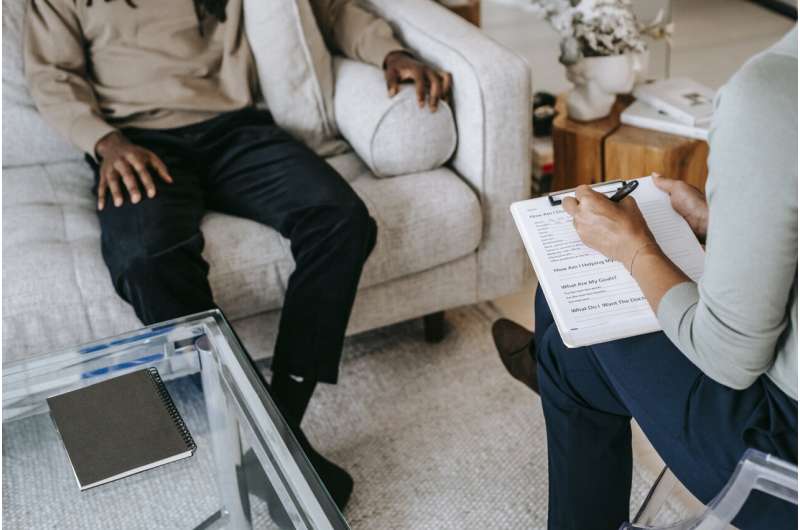COVID-19 and mental health: Feeling anguish is normal and is not a disorder


As the pandemic rages on, people continue to talk about their emotional distress and a growing sense of despair. Some mental health researchers suggest the increased reports of depression and anxiety indicate a rise in mental disorders stemming from the coronavirus pandemic. But is this actually the case?
I do agree that, as some of the aforementioned research also finds, months of restrictions, isolation and uncertainty are taking a toll on the emotional well-being of increasing numbers of people. I’ve observed this in my psychotherapy practice, among the students I teach and on social media.
I take issue with the fact that it has become routine to medicalize human suffering by attaching a mental health diagnosis to it. This doesn’t address the source of people’s anguish. Nor does a diagnostic label enable something that is essential to people’s capacity to cope and adapt: deriving meaning from their own experiences.
As I argue in a recent article published in the Journal of Ethics in Mental Health, the virus is making it more difficult for most people to avoid and deny some of the realities that are challenging to accept.
Pervasive anguish
It is our human nature to use avoidance and denial, often unconsciously, to protect us from the more distressing parts of our lives, including uncertainty and our own mortality.
Rather than accepting the inevitability of death, and the uncertainty of daily living, most people tend to live according to illusions of certainty, convincing themselves they can count on the arrival of tomorrow, next year and 10 years from now. We can usually tolerate shorter periods of ambiguity—a few days, a few weeks. Generally speaking though, we don’t do well when asked to endure longer periods of limbo.
For the past year, COVID-19 has been poking at the emotional defense mechanisms many people rely on to create a sense of stability. Many of the routines, connections and places people depend on to stay grounded have been missing from their lives. There hasn’t been much certainty to anchor us, and we much prefer to feel anchored.
The pandemic has left many people feeling psychologically undefended, emotionally exposed. Prolonged exposure to usually denied harsh realities has opened the door to feelings of vulnerability that are becoming quite weighty to bear. Uncertainty with no obvious end in sight has created widespread malaise. A pervasive sense of anguish has settled in.
Making sense of suffering
Our emotional well-being is largely dependent on feeling a sense of equilibrium. People’s ability to maintain and restore equilibrium relies on how they can make sense of their experiences. The more burdened we feel by our accumulated adversities, the more difficulty we will likely have in making meaning when adversity strikes, leaving us vulnerable to disequilibrium and becoming overwhelmed by our suffering.
Emotional suffering is deeply personal, subjective and essential to our human condition.And even though to be human is to experience emotional suffering, there is a tendency to think that feelings of deep anguish indicate something is wrong.
In effort to remedy suffering, it is common to search for explanations that will make it “fixable.” We should be wary of quick fixes that promise to remedy our human suffering.
https://youtube.com/watch?v=qCMCzAy6wOs%3Fcolor%3Dwhite
Call for a new framework in mental health
It has become commonly acceptable in both health-care practice and the public vernacular to describe natural states of distress with language that medicalizes those states by suggesting the presence or influence of mental disorder.
This often uncritically accepted perspective has paved the way for the idea that the emotional despair being felt by many over the past year indicates we are also experiencing a mental health pandemic. But anguish isn’t a disorder.
In circumstances that are unusual and extraordinary, it’s harder for people to remain connected to the sense of meaning and understanding that anchor the usual and customary, and it’s harder to make sense of things.
Globally, there has been a growing call for a new narrative in mental health—and new interpretive approaches to understanding human distress.
The Power Threat Meaning Framework provides an alternative to more traditional diagnostic-based models. It is a tool for highlighting and clarifying the interrelated nature of social and experiential factors that affect the subjective nature of emotional suffering.
Clinical psychologists Lucy Johnstone and Mary Boyle are the lead authors, but the framework was actually developed by a diverse team of clinicians, scholars and people with lived experience of mental health services. Clinicians can use this framework on its own or in conjunction with more traditional biomedical diagnostic systems. There are also very accessible materials about it that anyone can read, alone, to help them consider the meaning of their experiences.
Normalizing responses to adversity is fundamentally different than medicalizing them. Diagnosing people with mental health disorders for normal responses to adverse situations is not a helpful approach.
Some practical suggestions
Here are five practical suggestions for coping with difficult feelings during the pandemic:
Source: Read Full Article




